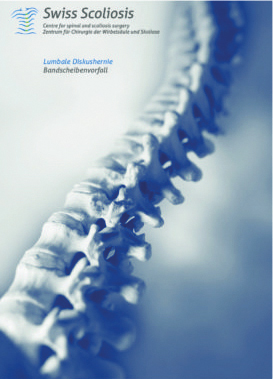Herniated Disc
A herniated disc refers to the prolapse of intervertebral disc tissue, due to ruptures in the fibrous outer layer of the disc. The attrition of the intervertebral disc is the underlying pathology of a herniated disc. It can occur at the lumbar spine (lumbar herniated disc) as well as the cervical spine (cervical herniated disc).
The disc tissue, prolapsed into the spinal canal, puts pressure on the spinal cord and the nerves. The symptoms are pain in neck and back, pain in the legs (sciatica), arm pain and signs of paralysis (sensory failures, weakness in the arms or legs, unsteady gait, dysfunctions of the bladder or bowel defecation).
Conservative treatment
If there is no paralysis and only mild pain, a herniated disc can be treated with rest, medication and physical therapy. In a lumbar herniated disc, an infiltration of steroids can be performed. This is however not recommended in a cervical herniated disc.
Operation
If the patient has strong pain or shows signs of paralysis, the herniated disc has to be removed surgically.
Surgical technique
In a cervical herniated disc, the operation is usually performed from the front (ventrally). In a lumbar herniated disc, it is performed from the back (dorsally).

